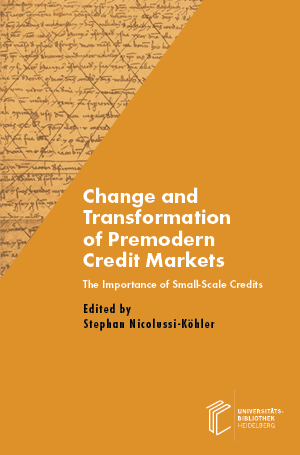Zitationsvorschlag
Lizenz (Kapitel)

Dieses Werk steht unter der Lizenz Creative Commons Namensnennung - Weitergabe unter gleichen Bedingungen 4.0 International.
Identifier (Buch)
Veröffentlicht
Between City and Countryside: Moneylending and Settling Debts in and around Meran (1388 – 1392)
Abstract In this paper, two different sources for credit transactions are used to describe the credit market in Meran and its surroundings. Comparisons between the register (imbreviatura) of the notary Jakob of Laas (1390 – 1392) and records of court assemblies (eleichtaidings, territorial court; 1388 – 1391) show that the size of recorded credits was significantly higher in the notary registers compared to the credits and debts mentioned in court protocols. To further profile the 14th century credit market in South Tirol, an analysis of the credit transactions written down by notaries and the (defaulted) debts litigated before the territorial court is made. To what extent did the clientele differ (social group, place of residence) ? Was there a difference in their borrowing behaviour ? Moreover, what economic mechanisms were used as a repayment guarantee ? Besides, it will be tested whether urban centres were of special importance for functioning credit markets. The general picture that emerges from the study is that different credit practices and institutions (written evidence provided by notaries, pawn broking, legal courts, and practice of pledging) helped different social groups to gain access to the capital market.
Keywords Small-Scale Credits, Notary Registers, Court Protocols, Middle Ages, Tirol



